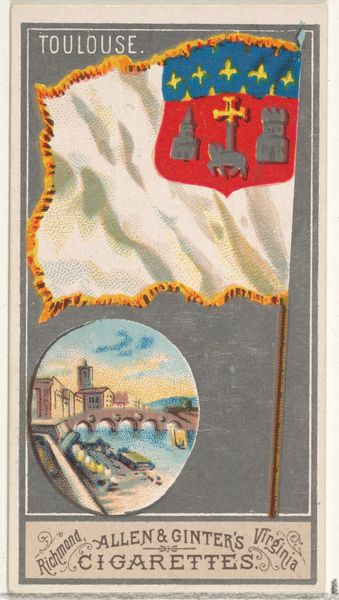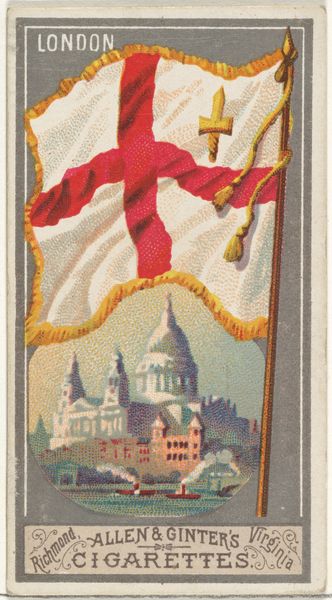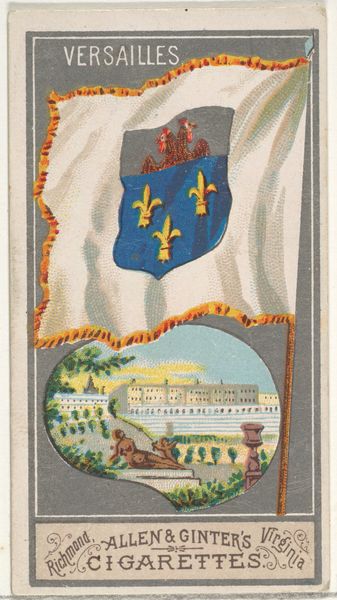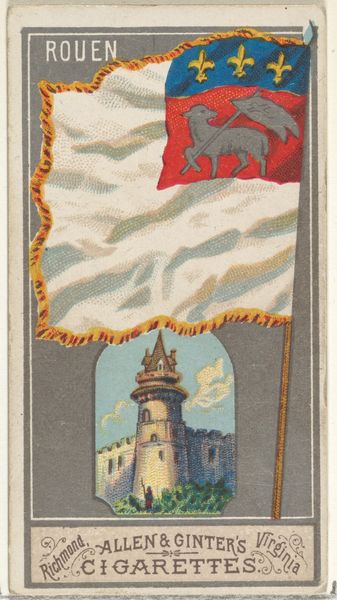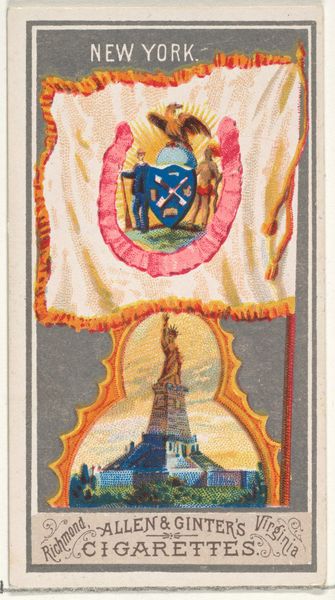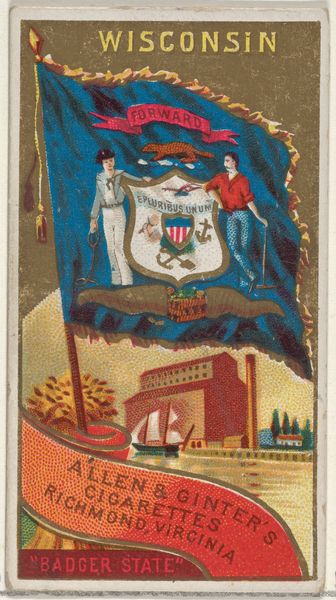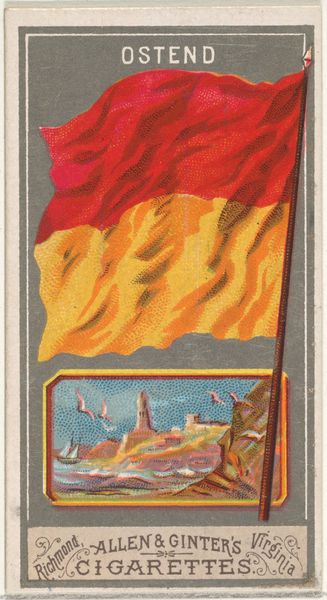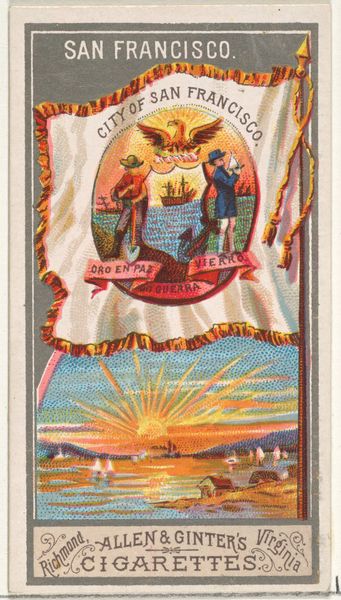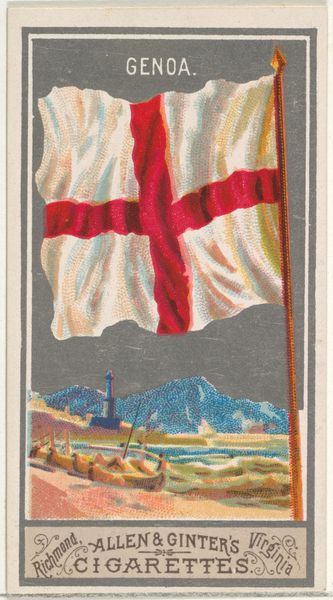
Paris, from the City Flags series (N6) for Allen & Ginter Cigarettes Brands 1887
0:00
0:00
Dimensions: Sheet: 2 3/4 x 1 1/2 in. (7 x 3.8 cm)
Copyright: Public Domain
Editor: So, this is "Paris, from the City Flags series (N6)" by Allen & Ginter, dated 1887. It looks like a print or poster, maybe a watercolor. The overall feeling is...quaint, like a snapshot of a different era. I’m curious, what do you see in this piece beyond the immediate visual elements? Curator: It’s fascinating to consider this as an object embedded in a system of production and consumption. We have a watercolour image, reproduced as a print, as part of a series packaged with cigarettes. How does the value of "Paris" – the city, the idea – become conflated with the commodity of tobacco? Editor: That’s interesting. I hadn’t considered it that way. It’s essentially using art to sell cigarettes, so the artistry takes a backseat. Curator: Precisely. Think about the materiality of the print itself: cheap paper, mass-produced ink. The image is designed to be fleeting, disposable. It served a commercial function above all else. The very act of consumption—smoking—further erodes its existence, a temporary image made tangible, then literally burned away. How does that influence your view of the image now? Editor: It kind of diminishes the “artistic” intention. I was seeing this idealized cityscape but now understand that it’s really just an advertisement, and therefore not trying to make any big artistic statement. It just needed to catch the eye. Curator: Exactly. Consider the labor involved in the entire process: from the artists creating the original watercolour, to the printers mass-producing it, to the factory workers packaging it with the cigarettes. Each step contributes to its value, or perhaps devalues its inherent artistry. Editor: I see your point. Looking at art through the lens of materials and labor gives it a completely different meaning! Curator: It allows us to move beyond aesthetics to understand the complex social and economic forces at play. Now, how does understanding all of this inform your sense of that “quaint” feeling you initially described? Editor: Well, now the quaintness feels… manufactured. Like a romantic image used to mask the realities of industrial production and marketing. Thank you, I think I understand much better now!
Comments
No comments
Be the first to comment and join the conversation on the ultimate creative platform.
